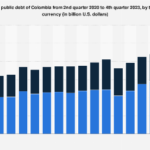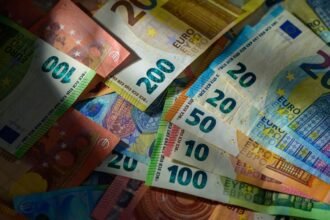- EUR/USD comes under pressure as the Euro weakens on firm ECB rate cuts prospects.
- The Eurozone’s weak economic outlook supports ECB rate cut bets for September.
- The US Dollar regains ground with US core PCE inflation data under the spotlight.
EUR/USD corrects to near 1.1150 in Wednesday’s European session. The major currency pair drops as the US Dollar (USD) regains ground after posting a fresh year-to-date (YTD) low this week. The US Dollar Index (DXY), which tracks the Greenback’s value against six major currencies, edges higher to near 100.80 from fresh lows of 100.50.
A mild recovery in the US Dollar appears to be a short-lived pullback move for now, which could be capitalized as a selling opportunity by market participants. The near-term outlook for the Greenback is vulnerable on sheer optimism that the Federal Reserve (Fed) will start reducing interest rates in September.
While Fed rate cuts in September have been fully priced in by traders, bets remain split over whether the central bank will cut interest rates gradually by 25 basis points (bps) or deliver a larger one of 50 bps. According to the CME FedWatch tool, 30-day Federal Funds Futures pricing data shows that the likelihood of a 50-bps interest rate reduction in September is 34.5%, while the rest favors a cut by 25 bps.
For fresh cues about the potential rate-cut size, investors await the United States (US) core Personal Consumption Expenditure Inflation (PCE) data for July, which will be published on Friday. The PCE Price Index report is expected to show that the annual core inflation rose by 2.7%, up from June’s reading of 2.6%, with monthly figures growing steadily by 0.2%. Signs of a further decline in the underlying inflation would prompt expectations for the Fed to adopt an aggressive policy-easing approach. On the contrary, sticky figures would dampen this jumbo rate-cut scenario.
Daily digest market movers: EUR/USD drops to near 1.1150 as Euro weakens
- EUR/USD slumps from fresh highs of 1.1200 as the Euro (EUR) weakens. The Euro underperforms its major peers as investors seem confident that the European Central Bank (ECB) will cut interest rates again in September.
- The ECB started reducing interest rates in June as policymakers appear confident that price pressures in the Eurozone will return to the bank’s target of 2% in 2025. However, it decided to leave its key borrowing rates unchanged in July as officials were worried that an aggressive policy easing process could revamp inflationary pressures again.
- With evidence from Eurozone flash HCOB PMI for August and Q2 Negotiated Wage Rates that the overall economic outlook is uncertain and wage pressures are easing, the ECB is widely anticipated to reduce interest rates by 25 bps in September. Traders also see the ECB cutting borrowing rates again somewhere in the last quarter of this year.
- For fresh cues on the interest rate cut path, investors await the flash Harmonized Index of Consumer Prices (HICP) data for August for Germany and the overall Eurozone, which will be published on Thursday and Friday, respectively. Economists expect that price pressures to have decelerated.
Technical Analysis: EUR/USD falls to near 1.1150
EUR/USD declines to near 1.1150 after posting a fresh swing high at 1.1200. The broader outlook of the major currency pair remains firm as it holds the breakout of the Symmetrical Triangle chart pattern formed on the weekly time frame. The upward-sloping 20-week Exponential Moving Average (EMA) near 1.0900 supports more upside ahead.
The 14-period Relative Strength Index (RSI) oscillates in the bullish range of 60.00-80.00, suggesting a strong upside momentum. On the upside, the July 2023 high at 1.1275 and the January 2022 high of 1.1500 will be the next stops for the Euro bulls. The downside is expected to remain cushioned near the psychological support of 1.1000.
Euro FAQs
The Euro is the currency for the 20 European Union countries that belong to the Eurozone. It is the second most heavily traded currency in the world behind the US Dollar. In 2022, it accounted for 31% of all foreign exchange transactions, with an average daily turnover of over $2.2 trillion a day. EUR/USD is the most heavily traded currency pair in the world, accounting for an estimated 30% off all transactions, followed by EUR/JPY (4%), EUR/GBP (3%) and EUR/AUD (2%).
The European Central Bank (ECB) in Frankfurt, Germany, is the reserve bank for the Eurozone. The ECB sets interest rates and manages monetary policy. The ECB’s primary mandate is to maintain price stability, which means either controlling inflation or stimulating growth. Its primary tool is the raising or lowering of interest rates. Relatively high interest rates – or the expectation of higher rates – will usually benefit the Euro and vice versa. The ECB Governing Council makes monetary policy decisions at meetings held eight times a year. Decisions are made by heads of the Eurozone national banks and six permanent members, including the President of the ECB, Christine Lagarde.
Eurozone inflation data, measured by the Harmonized Index of Consumer Prices (HICP), is an important econometric for the Euro. If inflation rises more than expected, especially if above the ECB’s 2% target, it obliges the ECB to raise interest rates to bring it back under control. Relatively high interest rates compared to its counterparts will usually benefit the Euro, as it makes the region more attractive as a place for global investors to park their money.
Data releases gauge the health of the economy and can impact on the Euro. Indicators such as GDP, Manufacturing and Services PMIs, employment, and consumer sentiment surveys can all influence the direction of the single currency. A strong economy is good for the Euro. Not only does it attract more foreign investment but it may encourage the ECB to put up interest rates, which will directly strengthen the Euro. Otherwise, if economic data is weak, the Euro is likely to fall. Economic data for the four largest economies in the euro area (Germany, France, Italy and Spain) are especially significant, as they account for 75% of the Eurozone’s economy.
Another significant data release for the Euro is the Trade Balance. This indicator measures the difference between what a country earns from its exports and what it spends on imports over a given period. If a country produces highly sought after exports then its currency will gain in value purely from the extra demand created from foreign buyers seeking to purchase these goods. Therefore, a positive net Trade Balance strengthens a currency and vice versa for a negative balance.






















